State treasurers embark on $171bn, 10-year spending splurge
State treasurers have gone on a decade-long spending spree, forcing government expenditure to dramatically outstrip inflation and racking up nearly $360bn in debt.
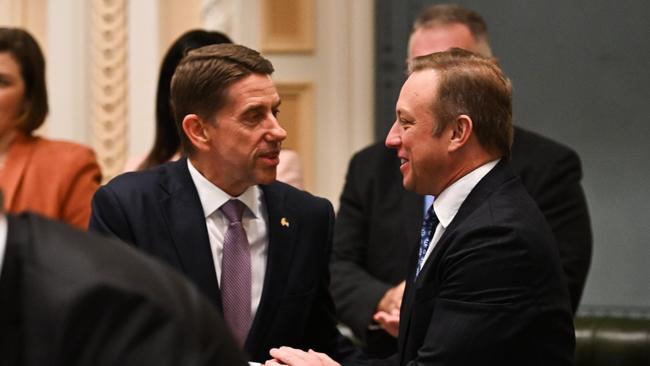
State treasurers have gone on a decade-long $171bn spending spree, spending 80 per cent more than 10 years ago, forcing government expenditure to dramatically outstrip inflation and racking up nearly $360bn in debt.
Even allowing for population increases, state spending growth over the decade has almost doubled the rate of inflation, with Queensland’s election-year budget two weeks ago pushing that state higher than every other state in per-capita spending.
Analysis by The Australian following the release of all five mainland state budgets this year reveals that total spending will be 80 per cent higher than it was a decade ago, rising from $212bn in 2014-15 to a projected $383bn in 2024-25.
The Queensland government will have the highest spending in 2024-25 of $15,982 per resident across the decentralised state – more than $1000 higher than any other state and more than $2000 higher than the much smaller Victoria, which is forecast to have the lowest per-capita spending next financial year.
When Queensland Treasurer Cameron Dick delivered his fifth budget this month, he defended as a “deliberate choice” the decision to plunge the state further into debt and deficit to fund an $11.2bn cost-of-living package.
“Delivering a deficit, spending more than the government collects in revenue, is not, and should never be, an easy choice,” Mr Dick said on June 12.
“But in a contest between the balance sheet and doing what matters to Queenslanders, the Miles Labor government will always be on the side of Queenslanders.”
Allowing for population increases, spending will be up by 56 per cent across the five states since 2014-15. This compares with cumulative inflation of 33 per cent over the same period.
The spending surge comes as each of the five states sinks deeper into debt in 2024-25, with net debt rising to $156.2bn in Victoria, $110.5bn in NSW, $32.7bn in Western Australia, $31.7bn in South Australia and $27.4bn in Queensland.
The Queensland government’s total debt including government-owned corporations is forecast to be $124.7bn in 2024-25.
Victoria has led the way on spending taxpayers’ money, with expenses rising by 90.5 per cent over a decade, followed by Queensland (84.3 per cent).
WA treasurers have shown the greatest restraint over the past decade, lifting spending by 57 per cent overall and by 36 per cent on a per-capita basis, almost in line with the rise in inflation.
In Queensland, former commonwealth Treasury economist Gene Tunny – director of Adept Economics and adjunct fellow at the Centre for Independent Studies – said the recent state budget was a “big-spending, vote-buying budget” that was all about politics, not sound budget management.
“The big spending measures may be temporary, but they mean additional debt and a higher ongoing interest bill for the state government,” Mr Tunny said
“This means less money for health, education and other services in future budgets. Or it might even mean future tax increases. It’s a short-term political gain for the government, but long-term pain for taxpayers.”
Mr Tunny said the budget policies of the major states were very concerning, and Victoria’s “addition to dubious infrastructure spending was hard to comprehend … The government appears to have some awareness of the need to rein things in, but it’s not doing anywhere near enough.
“The NSW Minns government can blame the previous government for part of the mess, but it needs to do more to control spending over the budget forward estimates.”


Saul Eslake of Corinna Economic Advisory said the increase in expenditure at the commonwealth level over the past decade had largely matched that of the states and territories.
Mr Eslake said the average cash deficit across the states over the 10 years to 2024-25 was 1.5 per cent as a share of the economy, versus an average of 1.9 per cent at the federal level.
Of the jurisdictions, Victoria and the Northern Territory had the highest average cash deficits of 2.3 per cent over the decade.
The next highest was NSW’s 1.9 per cent as a share of total economic output, followed by 1.6 per cent for Tasmania and 1.4 per cent for the ACT. The commodity-rich states of Queensland and WA recorded the best financial record over the decade, averaging cash deficits of 0.8 per cent and 0.4 per cent, respectively.
Mr Eslake said it was “certainly true” that Victoria and the NT were getting worse at managing their finances, and that Tasmania “is getting into that club as well”.
“WA obviously isn’t, as it has money coming out its ears thanks to China (courtesy of their appetite for iron ore) and the feds (thanks to the favourable GST deal),” he said.
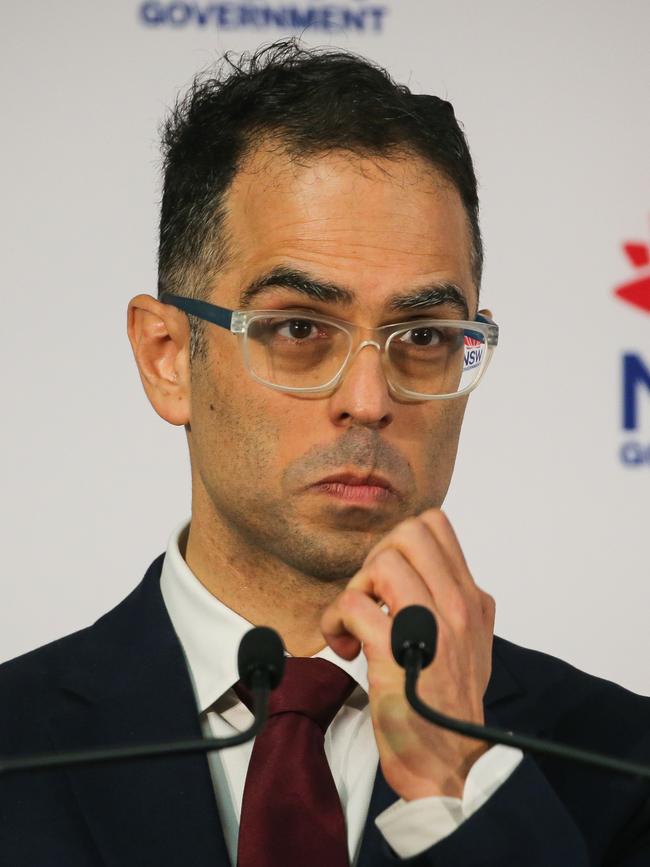

With budgets running in the red, treasurers have borrowed more. Net debt across states and territories has doubled from 9.3 per cent of GDP in 2014-15, to an estimated 18.2 per cent in 2024-25.
At the commonwealth level, net debt has climbed from 14.9 per cent to 21.8 per cent over the same 10 years, Mr Eslake said.
He pointed to recent Moody’s research showing Australian states had substantially worse fiscal positions than comparable jurisdictions in Canada, where there are legislated budget rules limiting debt and deficits.
Ultimately, he said, it should be up to democratically elected governments to take responsibility for deciding how to manage the budgets on behalf of voters. “There’s not a rule that says deficits have to be zero. In the second half of the 2010s, it wasn’t wrong in principle to take advantage of low interest rates to borrow and spend on well chosen infrastructure projects. It’s also quite right to say a lot of the projects were not well chosen,” he said.
The Australian’s analysis shows general government sector employee expenses have surged over the past decade, jumping by 76.5 per cent across the five states – or by 53 per cent on a per-capita basis – far more than the cumulative increase in the wage price index of 29.5 per cent from 2014-15 to 2024-25.
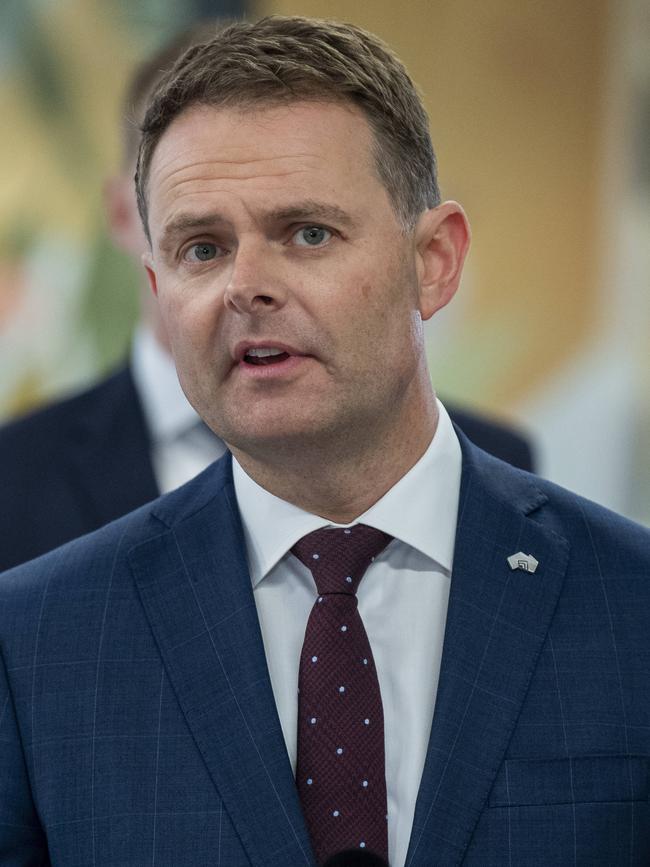
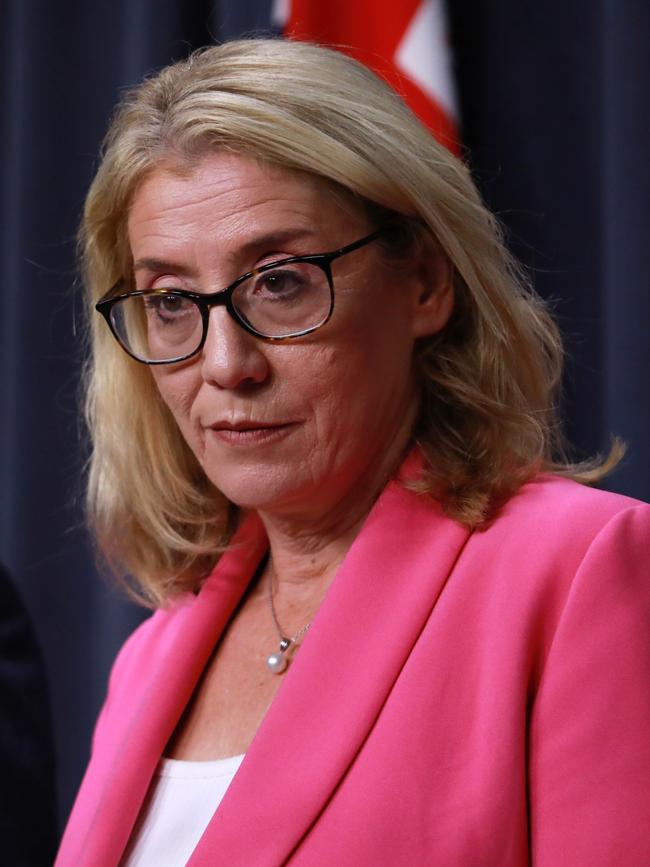
Queensland had the third-highest spending on public servants on a per-capita basis in 2014-15, as the Newman LNP government’s only term came to an end, but a large increase in the public service under the Palaszczuk/Miles Labor government has lifted the Sunshine State past South Australia and Western Australia.
Westpac senior economist Pat Bustamante said there was a trend towards governments providing an ever expanding list of services to Australians, and increasingly regardless of income and need, as in the case of childcare and aged care.
National accounts show that the public sector is now substantially larger as a share of the economy than it was before the pandemic, as spending pressures build in areas such as the NDIS, aged care, health care, and defence.
Mr Bustamante said the expanding government role also had an implication for interest rates.
“It makes the RBA’s job harder when the government is a larger share of the economy, as it’s not as responsive to interest rates, which means the private sector has to be more responsive,” he said.
Tulipwood Economics director Joe Branigan said Queensland’s budget was “irresponsibly inflationary” at a time when the RBA was trying to lower inflation.
“In my view the RBA is unfortunately not done yet with rate rises, in large part because of state government spending,” Mr Branigan said.
“What is most concerning is the rate at which Queensland debt is increasing against what, if anything, the Queensland (and Australian) taxpayer is getting for their money, which is not much.”

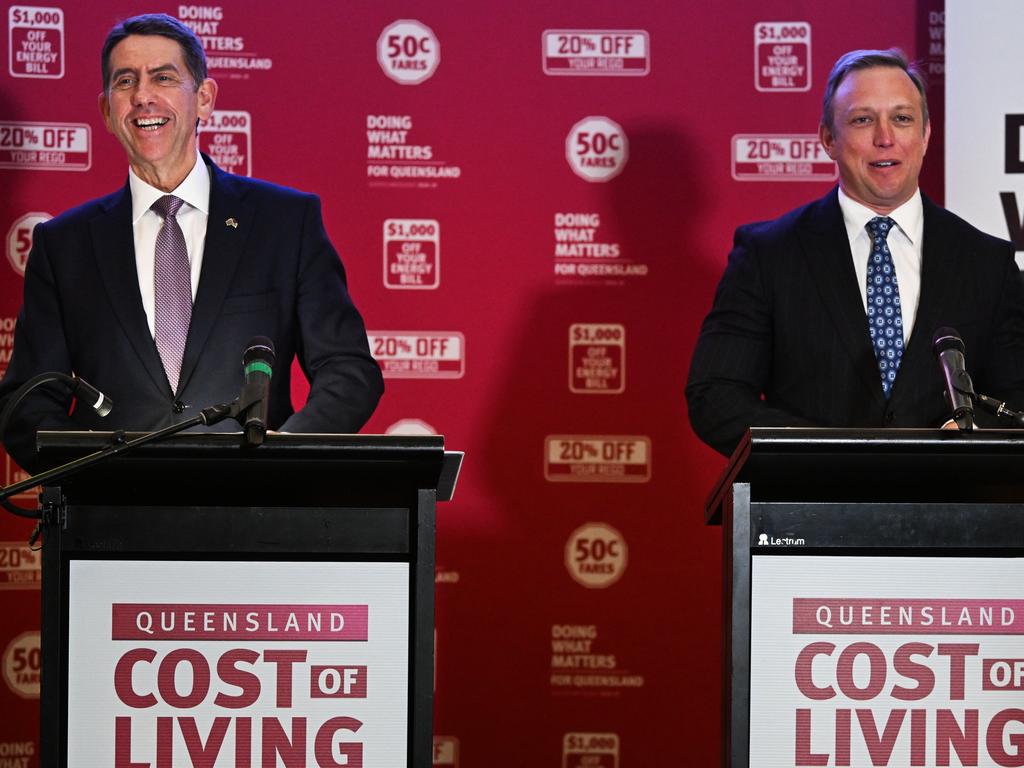
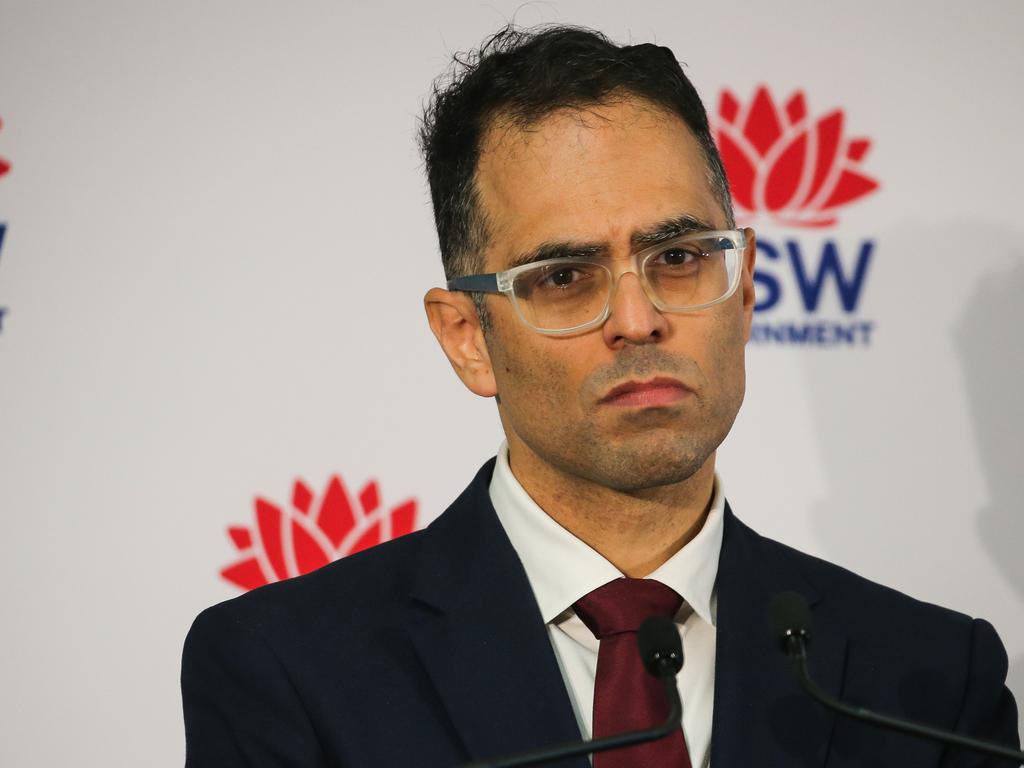

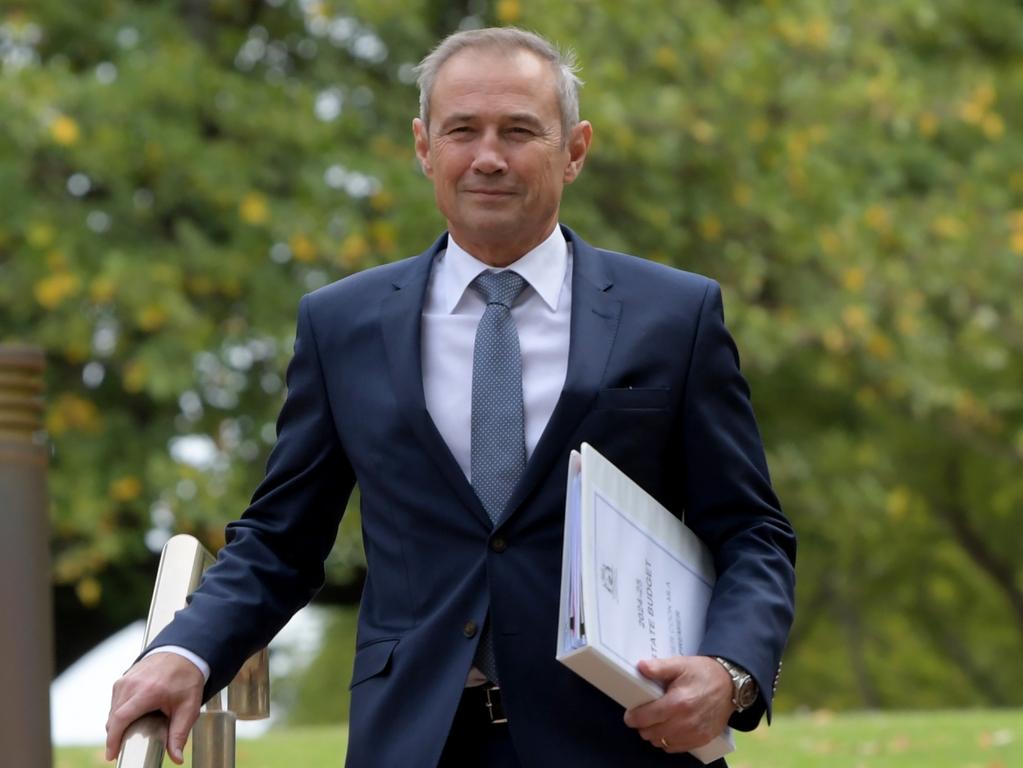


To join the conversation, please log in. Don't have an account? Register
Join the conversation, you are commenting as Logout